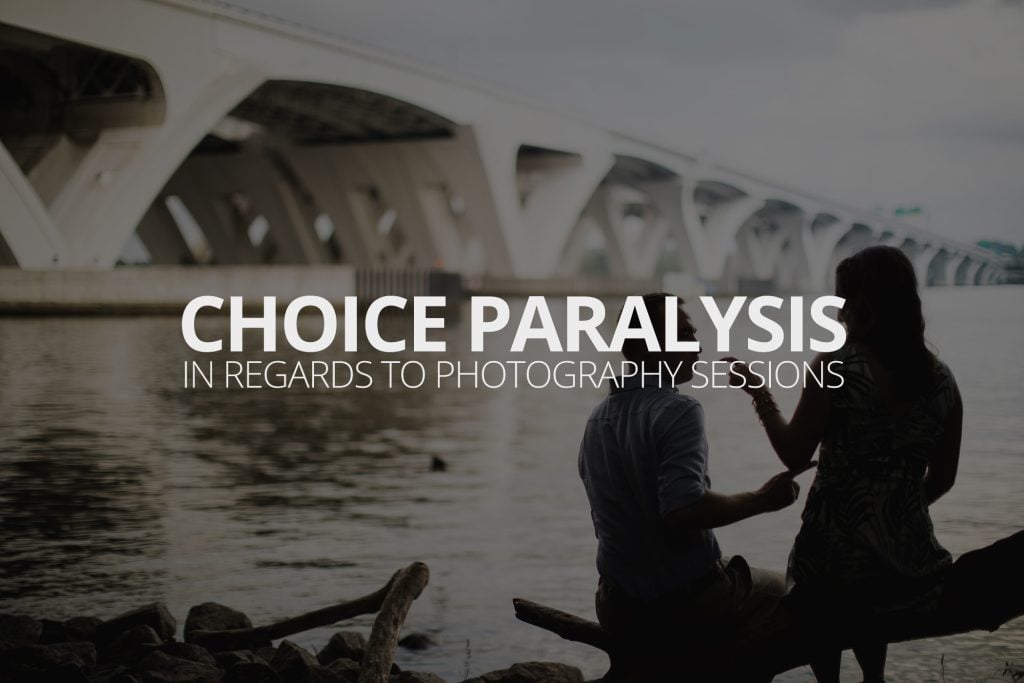Go see a movie you’re excited about, or go see a friend you’ve been longing to catch up with, or check out the new restaurant that has your mouth watering, or play a video game you’re eager to try out, or plan a party you can’t wait to surprise your fiancé with. Replace this list with your own—just list some things you really want to do. It doesn’t matter what they are, so long as you really want to do them, and the opportunity to do so is real. Given all these options at once, you might find yourself doing none of them and just watching Netflix again. This is what people mean when they refer to ‘choice paralysis’.
Choice paralysis, commonly called ‘analysis paralysis’, is something that happens to all of us when we have more options than we can deal with. Choice paralysis isn’t really a ‘clinical’ term, rather it’s a colloquial collection of concepts that amount to stasis in the face of having to make a choice when there are too many ‘correct answers’. Too many viable options, all for which there is a similar enthusiasm, often makes us clam up to avoid making the decision altogether. It sabotages our intended outcome—whatever that might be, though typically ‘happiness’.
What does this have to do with photography? Well, for one thing there are a lot of photographers out there. Picking just one is tough. But, that’s not really what I’m focusing on here. Instead, we’re talking about the choice paralysis you might experience once your session is done.
Photographers deliver a lot of images
Here’s the thing, photographers today—digital photographers—deliver a much more comprehensive set of images than they did 20 years ago, or even just 10 years ago. This isn’t really a good or bad thing, it just kind of is. It’s a product of photographer’s, essentially, limitless freedom to just keep shooting. It doesn’t just mean shooting and shooting and shooting in case they mess up the shot though. It has also meant more diversity in the resultant images.
If a photographer were limited in some way, they might have to choose between taking a photo of the wedding dress hanging on the wall and taking a photo of mom helping her daughter into that wedding dress. Or between taking a photo of each kid individually or taking a photo of mom & dad with each kid individually. Photographers don’t have those kinds of limits anymore though, and as a result, we’ll take our time to shoot this and that, and a million things in between.
This means that more than likely, after your session, you’re going to have a lot of images that you like, and you’re going to have to decide between lots of good options, what to do with the images. Should you print this one? Or should that one be on your desktop? Maybe this one would be good on a canvas? A year later, you might be surprised to realize you didn’t do anything at all.
Now, conventional wisdom among photographers for some time has been that it’s part of the photographers job to cull the images down to just a fraction so that only the very very best displays of unique artistry and sentiment can make the cut. But, we don’t completely agree with this approach. After all, who are we to decide that candid photo of your grandmother in the living room is never going to matter to you?
Real vs Perceived Quality & Value
Part of this conventional wisdom comes from the art world, where art can easily cross contaminate the perceived quality of other works of art, and where scarcity increases the perceived value of some coveted work. In other words, if your photographer only shows you a few images from an important event, you’re more likely to see those images as highly valuable—and, without reference points in other images, you’re also likely to see those images as actually better, then if you also had other images taken a few minutes before or after.
But, while photography is art, it sits at an uncommon crossroad between historical preservation, personal sentimentality and artistic expression. In other words, most photographers (at least, the ones you can hire to do something specific for you), aren’t just artists. We’re also historians and preservationists who should be avoiding a clear bias in what they preserve on behalf of a client.
When it comes to the perception of quality and value—it probably shouldn’t matter. It’s impossible for a photographer to know how an image’s meaning will grow or change with time. That’s not possible for you to know either. So, while a photographer should always endeavor to cull redundancy and outright failure from whatever set of images they give you, if there is anyone who should be deciding ‘what makes the cut’ in the overall diversity of images, it’s you in the future.
How to Overcome Photography Induced Choice Paralysis
So, from our perspective, we believe it’s important to give you a creative representation of everything we covered. That doesn’t mean you need 50 photos of a wedding veil, or 300 images of your wedding party, or 125 images of your cake cutting. But it does mean that you should have one or two photos of each of those things, as well as everything else the photographer felt in the moment was important enough to record.
That might not sound like a lot, but trust me, it adds up quickly at weddings and portrait sessions; even headshot sessions sometimes. So, almost everyone who wants to get the fullest, hardiest value out of their photographer’s efforts is going to have to face and overcome choice paralysis.
How we suggest you face it:
- Go from your gut. Look through your images quickly, and pick your favorites without stopping to analyze too much. Put your favorites somewhere else and ignore the rest of them. This is important, don’t look at the rest of them again until you’ve forgotten about them.
- Only make decisions from your favorites. When you’re deciding to print images, for whatever reason, only make your choices from your favorites. Don’t be tempted to dive into the rest of the images. Just pretend they’re not there. Don’t worry, you’re going to be happy with your choice.
- Exercise Nostalgia. Having used your favorites in various ways over the months and years, one day when you remember there are still more images out there, take a few minutes and go look through the rest of them again. You’re going to enjoy the memories that have formed since the images were taken, and the different ways the meanings of the images have changed.
- Repeat. Don’t be surprised if you discover new images that you’ve fallen in love with. Put them somewhere else and do it all again!
Remember, when it comes to choice paralysis, any decision is probably the best. By using your gut to quickly narrow down your favorite images, you’ll make it much easier to make decisions that bring out more value. And, by revisiting the rest of the images later, you derive untold value for years to come.
If you’d like to know more about our portrait photography, wedding photography and headshot services, check out those pages on our website. Or, shoot us an email to info@petruzzo.com. And, if you’d like to know more about how many images we deliver, check out our blog, titled “How Many Images Can You Expect From Your Session”.

